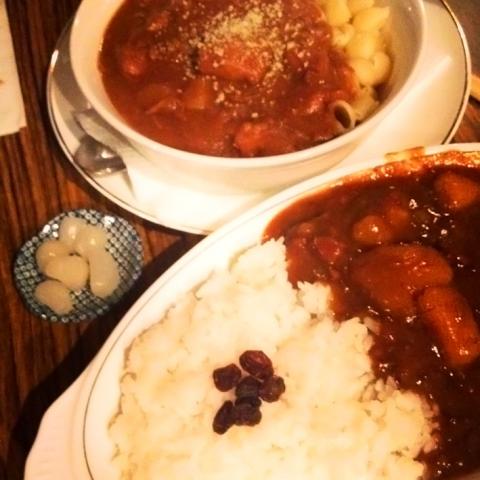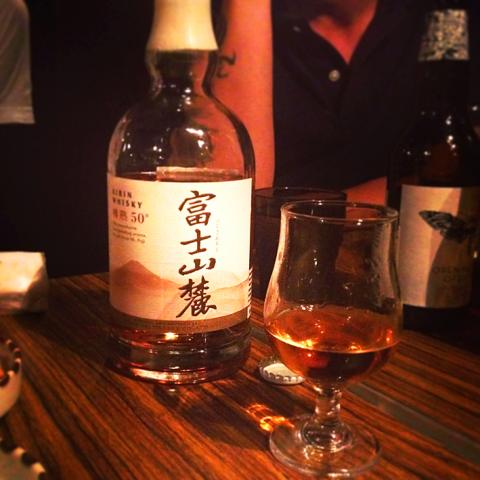From the owner of Cafe Kuroshio (咖啡黑潮) and Caffe Libero (咖啡小自由) comes Torarakuya-Taipei (寅樂屋). This time, coffee connoisseur Kao Chen-yu (高振御) waves his magic wand and transforms his parents’ modest curry joint into an old-school Japanese eatery, looking charmingly out of place in the traffic-clogged, noise-filled midtown of Taipei.
Concealed behind a row of ramshackle houses at the bustling intersection of Xinyi Road (信義路) and Guangfu South Road (光復南路), the tiny establishment emerges from a small, dark alley as a haven of rest, with warm, yellowish light shining through the glass windows. Slide open a wooden door open and you immediately feel as though you’ve stepped into an old Japanese eatery frozen in time, where both the mind and the stomach are soothed with simple, home-cooked fare and nostalgic ambiance. Inside, wood furnishings dominate the room, which is only big enough for four small tables and a two-seat bar. Vintage pendants and table lamps grace the place with sentiments of a bygone era, while the opera music heard in the background adds a touch of sophistication.
In other words, Kao once again proves his proficiency and ingenuity to capture and revive the nostalgia for a simpler time, much in the same way that he turned a 40-year-old mansion into the now popular Caffe Libero in the neighborhood surrounding Yongkang Street (永康街).

Photo courtesy of Fantasy Dining Hall
Torarakuya-Taipei specializes in only one thing — Japanese curry — and does it well. Patrons can choose the sweeter pork and chicken curry (豬雞咖哩, NT$160) or spicier beef curry (牛肉咖哩, NT$160), all of which comes served with either rice or macaroni. Like the simply delicious food prepared by your mother, the dish is a nourishing combination of the vegetables’ sweetness and tenderly cooked meat. For an extra dose of smoothness, add an egg, sunny-side up (荷包蛋, NT$20), to the curry. The small side dish of shichi fukujin pickles (福神漬, NT$15) offers mixed pickled vegetables, which is said to aid digestion.
Torarakuya-Taipei’s beverage selection includes a limited choice of beer including iKi (NT$160 and NT$180) as well as Japanese whiskey (NT$220 and NT$250 per shot). Noted for his enthusiasm for the spirit, Kao selects two types of single malt whiskey from the Nikka distilleries, one in Yoichi, Hokkaido, the other in Miyagi Prefecture, Northern Honshu, and seems eager to share his knowledge of the brew with curious diners. For those looking for good conversation, the always amicable proprietor is also a knowledgeable one to talk to about food, drink and the good life.
Another thing about Kao is that wherever he goes, there will always be good coffee brewing. For the Japanese-style eatery, the maven prepares specialties including the Iced coffee with plum wine (梅子酒冰咖啡, NT$180) and iced coffee with awamori (泡盛冰咖啡, NT$180), a type of distilled rice wine unique to Okinawa, Japan. For something sweet and children-friendly, there is a selection of hot chocolate (NT$120 to NT$150) and ice cream (NT$80 and NT$100).

Photo courtesy of Fantasy Dining Hall
Torarakuya-Taipei is a great spot to relax, enjoy a simple, delicious meal while learning one or two things about coffee, whiskey and life in general from the always amicable owner. But diners may want to bear in mind that the recently opened eatery doesn’t take reservations and is often packed during lunch and dinner rush hours.
Warning: Excessive consumption of alcohol can damage your health.

Photo courtesy of Fantasy Dining Hall

That US assistance was a model for Taiwan’s spectacular development success was early recognized by policymakers and analysts. In a report to the US Congress for the fiscal year 1962, former President John F. Kennedy noted Taiwan’s “rapid economic growth,” was “producing a substantial net gain in living.” Kennedy had a stake in Taiwan’s achievements and the US’ official development assistance (ODA) in general: In September 1961, his entreaty to make the 1960s a “decade of development,” and an accompanying proposal for dedicated legislation to this end, had been formalized by congressional passage of the Foreign Assistance Act. Two

Despite the intense sunshine, we were hardly breaking a sweat as we cruised along the flat, dedicated bike lane, well protected from the heat by a canopy of trees. The electric assist on the bikes likely made a difference, too. Far removed from the bustle and noise of the Taichung traffic, we admired the serene rural scenery, making our way over rivers, alongside rice paddies and through pear orchards. Our route for the day covered two bike paths that connect in Fengyuan District (豐原) and are best done together. The Hou-Feng Bike Path (后豐鐵馬道) runs southward from Houli District (后里) while the

March 31 to April 6 On May 13, 1950, National Taiwan University Hospital otolaryngologist Su You-peng (蘇友鵬) was summoned to the director’s office. He thought someone had complained about him practicing the violin at night, but when he entered the room, he knew something was terribly wrong. He saw several burly men who appeared to be government secret agents, and three other resident doctors: internist Hsu Chiang (許強), dermatologist Hu Pao-chen (胡寶珍) and ophthalmologist Hu Hsin-lin (胡鑫麟). They were handcuffed, herded onto two jeeps and taken to the Secrecy Bureau (保密局) for questioning. Su was still in his doctor’s robes at

Mirror mirror on the wall, what’s the fairest Disney live-action remake of them all? Wait, mirror. Hold on a second. Maybe choosing from the likes of Alice in Wonderland (2010), Mulan (2020) and The Lion King (2019) isn’t such a good idea. Mirror, on second thought, what’s on Netflix? Even the most devoted fans would have to acknowledge that these have not been the most illustrious illustrations of Disney magic. At their best (Pete’s Dragon? Cinderella?) they breathe life into old classics that could use a little updating. At their worst, well, blue Will Smith. Given the rapacious rate of remakes in modern